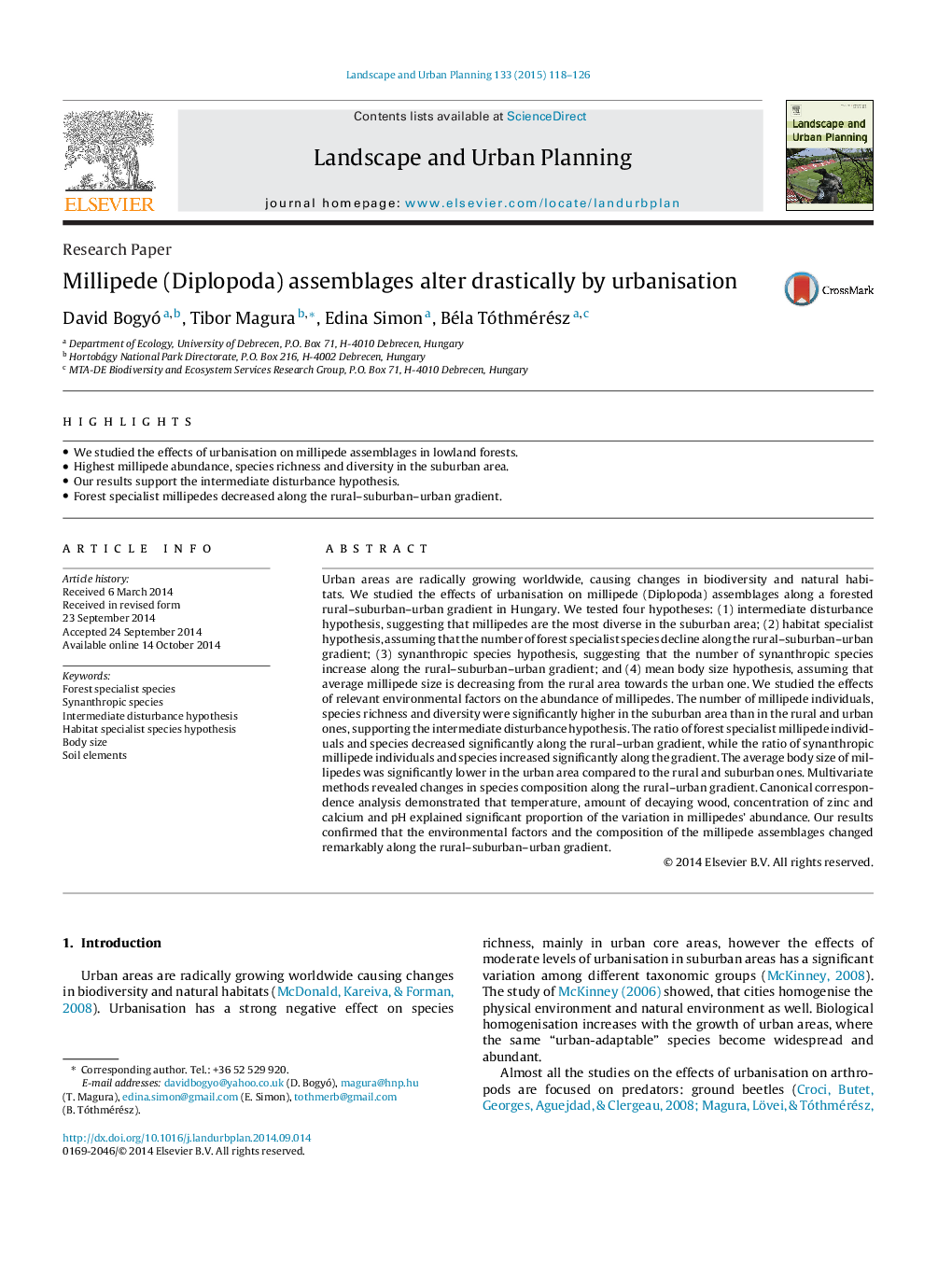| Article ID | Journal | Published Year | Pages | File Type |
|---|---|---|---|---|
| 1049207 | Landscape and Urban Planning | 2015 | 9 Pages |
•We studied the effects of urbanisation on millipede assemblages in lowland forests.•Highest millipede abundance, species richness and diversity in the suburban area.•Our results support the intermediate disturbance hypothesis.•Forest specialist millipedes decreased along the rural–suburban–urban gradient.
Urban areas are radically growing worldwide, causing changes in biodiversity and natural habitats. We studied the effects of urbanisation on millipede (Diplopoda) assemblages along a forested rural–suburban–urban gradient in Hungary. We tested four hypotheses: (1) intermediate disturbance hypothesis, suggesting that millipedes are the most diverse in the suburban area; (2) habitat specialist hypothesis, assuming that the number of forest specialist species decline along the rural–suburban–urban gradient; (3) synanthropic species hypothesis, suggesting that the number of synanthropic species increase along the rural–suburban–urban gradient; and (4) mean body size hypothesis, assuming that average millipede size is decreasing from the rural area towards the urban one. We studied the effects of relevant environmental factors on the abundance of millipedes. The number of millipede individuals, species richness and diversity were significantly higher in the suburban area than in the rural and urban ones, supporting the intermediate disturbance hypothesis. The ratio of forest specialist millipede individuals and species decreased significantly along the rural–urban gradient, while the ratio of synanthropic millipede individuals and species increased significantly along the gradient. The average body size of millipedes was significantly lower in the urban area compared to the rural and suburban ones. Multivariate methods revealed changes in species composition along the rural–urban gradient. Canonical correspondence analysis demonstrated that temperature, amount of decaying wood, concentration of zinc and calcium and pH explained significant proportion of the variation in millipedes’ abundance. Our results confirmed that the environmental factors and the composition of the millipede assemblages changed remarkably along the rural–suburban–urban gradient.
